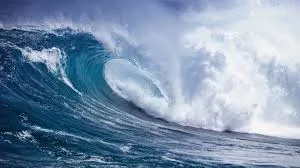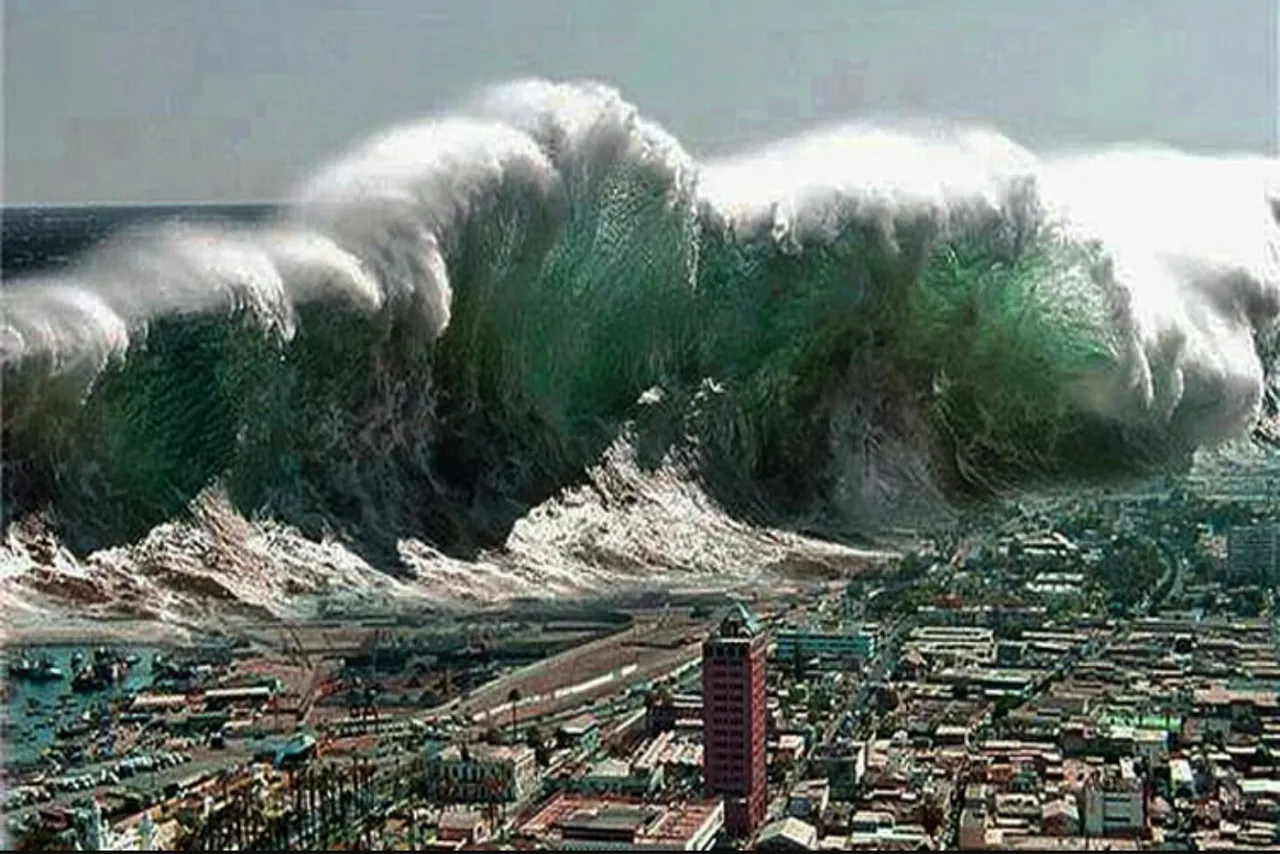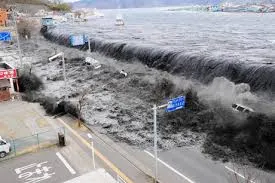Tsunami is a series of huge waves that can cause huge damage and human casualties when they hit the beach. A tsunami is caused by submarine earthquakes, slipping rocks under the sea, or very rarely by meteorites or asteroids that collide with space into the water.
Tsunami danger zone Most tsunamis are caused by submarine earthquakes. But not all submarine earthquakes cause tsunami. An earthquake should have a magnitude greater than 6.75 on a large scale to create a tsunami. About 90 percent of all tsunamis occur in the Pacific. Most tsunamis show themselves before they drought, and with the help of new technologies (Sismograph, which indicates the occurrence of an earthquake, coastal floats equipped with computers that can change the height of the waves Measuring a system of whistling on the beach) can predict the occurrence of a tsunami and inform people of its potential danger.
If the water drags quickly from the coast and then drops to higher altitudes, it means that a tsunami may occur. Also, if people feel on the beach that an earthquake has occurred, the earthquake may cause a tsunami. So you have to go to the higher and more drought sections. Some Pacific beaches have tsunami warning whistles. The first tsunami wave is often not the largest wave. Therefore, when people observe an abnormally large wave, they should quickly go to the more dense parts of the earth. Because even larger waves may be on the way.
Note: Japan's Tsunami of 2011 has wasted about 5 million tons of garbage and has left the sea, still one and a half million tons still float. These junk wander three times the size of the United States.

Tsunami means
The word tsunami comes from a Japanese word meaning "harbor wave". Tsunami is sometimes mistakenly referred to as "tidal waves." While tsunami is not caused by tidal (tides are created by the gravity of the moon on the sea). While regular and regular waves are created by wind.
Tsunami progress
A tsunami begins when a huge amount of water is quickly lifted. This rapid movement can occur as a result of an underwater earthquake (when the bottom of the sea moves up or down rapidly), either by rocking a rocket, or by a volcanic explosion or by any other incident that has a great deal of energy.

After a massive amount of water moves, the resulting wave rises so much. The distance from the tip of a wave to the tip of the next wave is more than a few hundred miles in length. The period (the time between a wave coming to the next wave) is also very long. And in deep waters it takes about an hour.
In deep sea, the tsunami may reach about one meter. In deep water, most tsunami can not be seen with unarmed eyes. This makes it very difficult to detect and track tsunami in the deep sea.
Tsunami speed
A tsunami may move at over 970 km / h in the open ocean. That means the jet is flying fast. A tsunami may take only hours to sweep across the ocean. While a regular wave (produced by wind) moves at a speed of about 90 km / h

Sometimes a tsunami strikes the beach
When a tsunami wave approaches the coast (where the sea becomes shallow), the floor hits the bottom of the beach, causing the wave velocity to slow down and increase its height. In other words, the wavelength is the distance between the tip of a wave and the next wave of the wave. The magnitude of a wave is multiplied and the wavelength decreases (the tip distance of a wave to the next wave).
When a drought occurs, a tsunami wave can reach hundreds of meters. The coastal step rises cause longer tsunami waves. In addition, large tsunami waves that collide with the side of the coast, pushes a large amount of water into the beach above the regular sea level. This could lead to massive damage to the drought.
Tsunami Warning Systems
Tsunami warning systems exist in many places around the globe. Unfortunately, since tsunamis, when in the sea, are not very high, their discovery is not easy and many mistakes are sent. Warnings on the beaches may be more effective and should not be ignored.

Earthquake and tsunami 2011 Tohoku
The earthquake and tsunami of 2011 are earthquake Tohoku, which occurred on March 11, 2011, at 9.0 degrees at 14.46 and 46 minutes local time near Sandaya, in Miyagi province, northeastern Japan. The earthquake surface area is 130 kilometers east of the Oshka Peninsula area. Tukohu has been reported with a deep center of depth of 24 km. The earthquake caused the announcement of a tsunami warning in all areas of the coastal zone of Japan along with the Pacific Ocean, and warned at least about 20 other coastal regions in South America and North America. This earthquake created tsunami waves at 15 meters in Japan and smaller waves in other countries. On April 1, the Japanese government put the official name of the Great East Japan Storm 東 日本 大 震災 into disaster.
The earthquake has caused a lot of damage to Japan, including severe destruction of roads and railroads and the creation of fire in some areas. About 4.4 million households in northeastern Japan have been left without electricity and 1.4 million people have been left without water. Several electric generators have been shut down, and at least three nuclear reactors have exploded after the accumulation of hydrogen gas.

